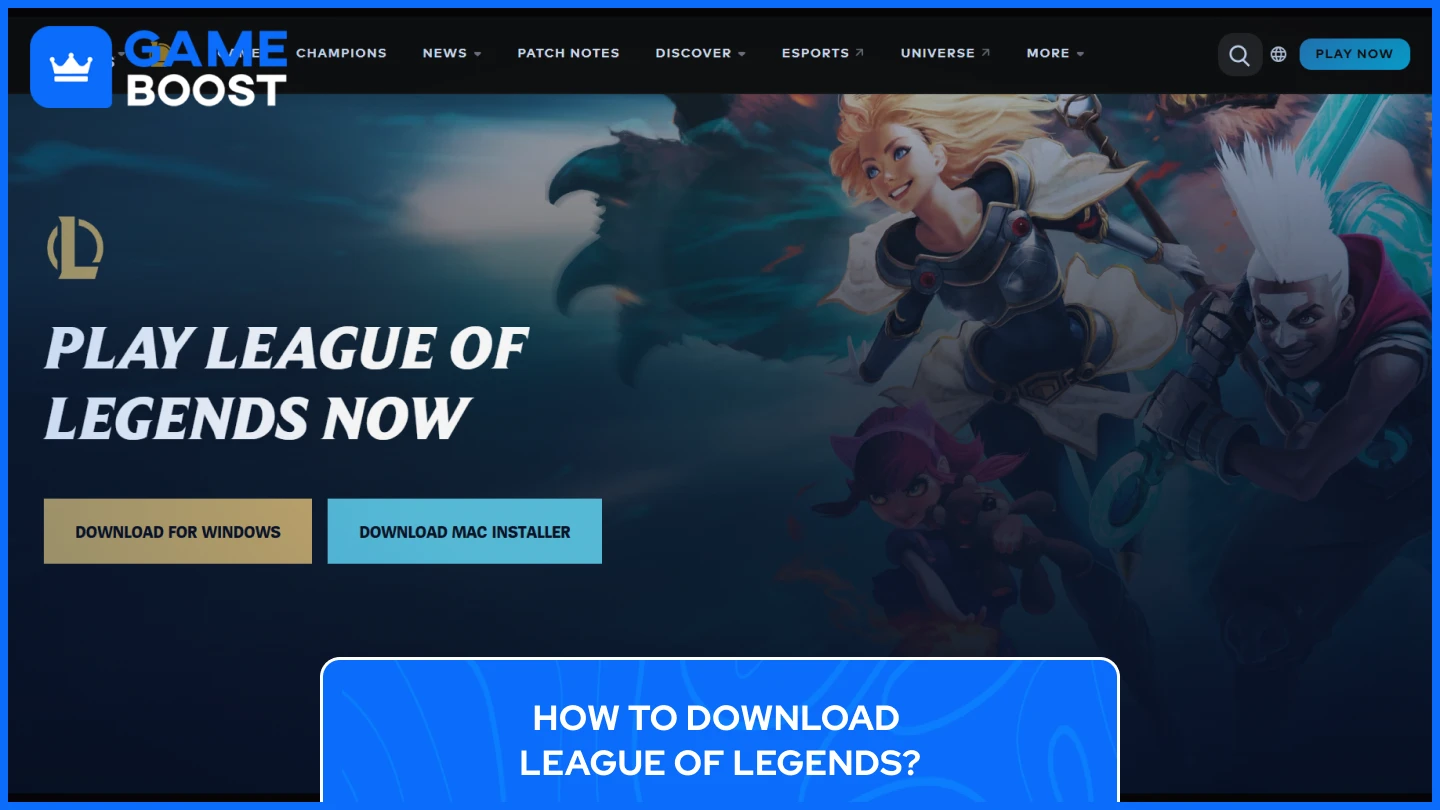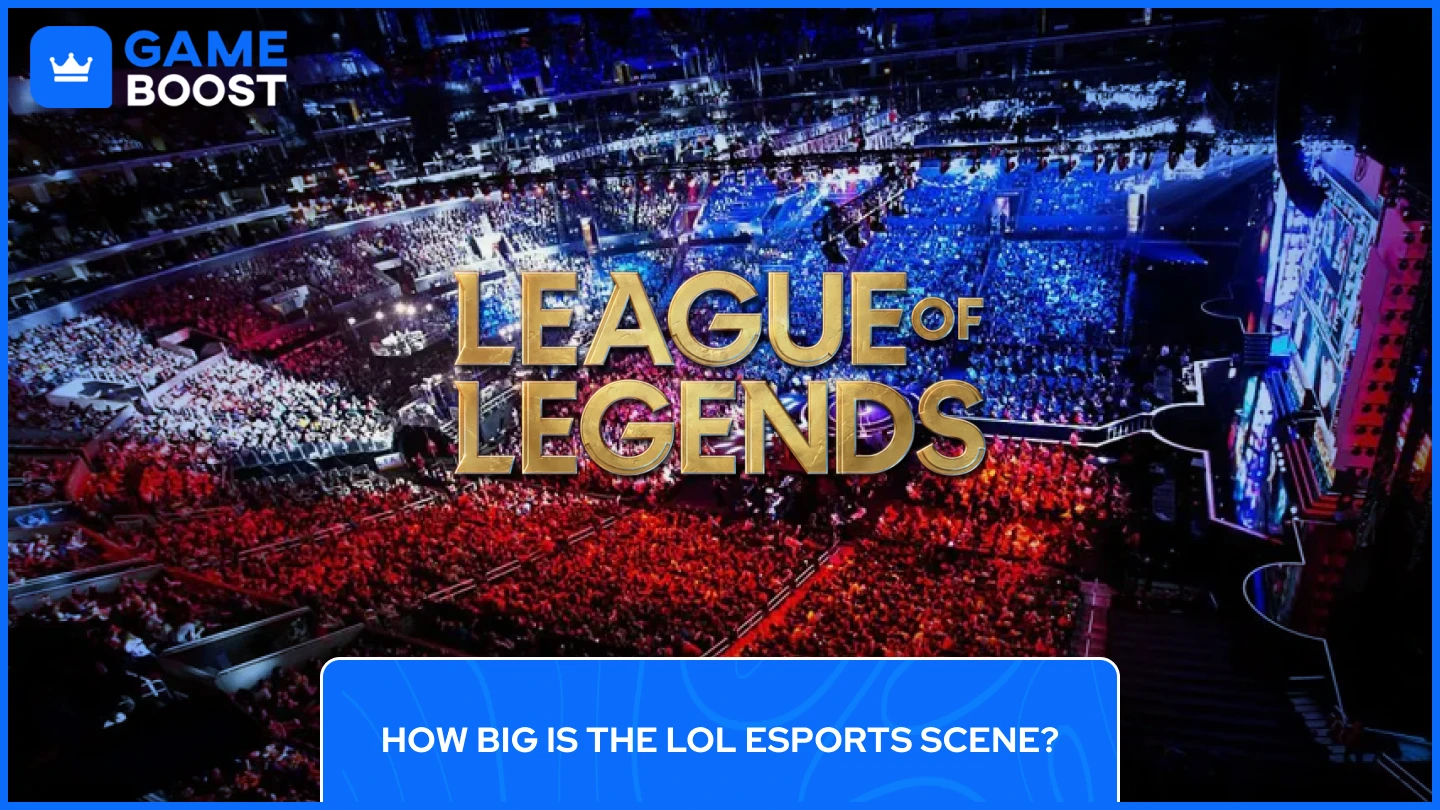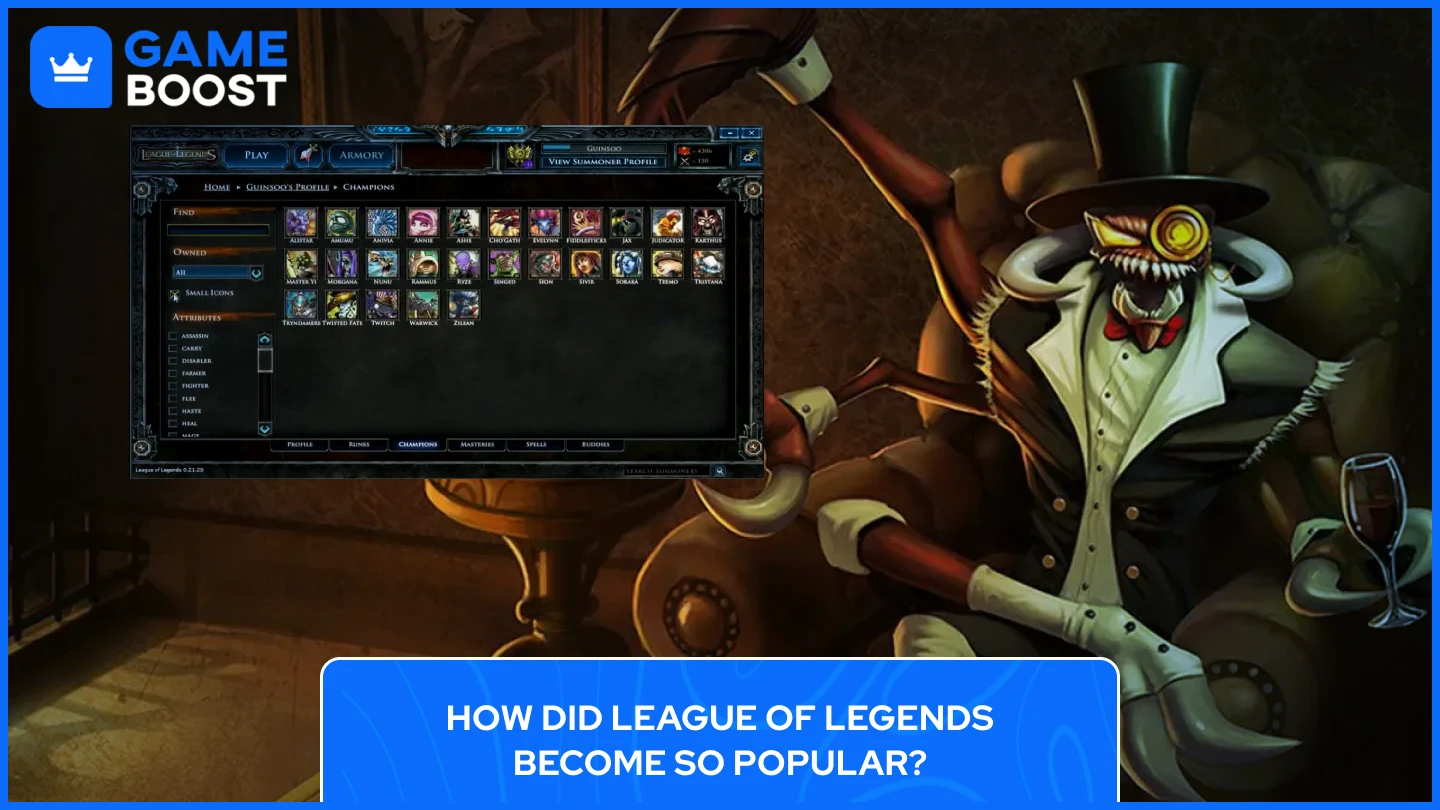

- How Big is League of Legends?
How Big is League of Legends?

League of Legends launched back in October 2009 with just 40 champions. Fast forward to today, and the game boasts over 170 champions, each bringing unique abilities and playstyles to Summoner's Rift. That roster expansion tells only part of the story.
Riot Games has spent over 15 years layering the game with new skins, game modes, maps, seasonal events, and regular patches that keep the meta shifting.
Every champion release means new animations, voice lines, lore, and visual effects getting baked into the game files. Throw in the constant stream of skins, limited-time events like Spirit Blossom or Star Guardian, plus major visual overhauls to champions and maps, and you start to understand why this game takes up space on your hard drive.
So when people ask how big League of Legends is, they might be wondering about file size, but the real answer goes deeper than gigabytes.
Summary: How Big is League of Legends?
League of Legends requires approximately 22 GB of storage space after installation
The initial launcher download is only 68 MB, but the full game downloads 9-10 GB during installation
Riot recommends keeping 20-25 GB free to handle regular patches and updates
The game became successful because it was free to play, ran on low-end hardware, and launched when MOBA competition was limited
The game launched in 2009 with 40 champions and now has over 170, with constant updates keeping the meta fresh
Twitch's launch in 2011 aligned perfectly with League's growth, creating a feedback loop between playing and watching
The 2024 World Championship reached 50 million peak viewers globally
The 2025 Worlds prize pool is $5 million, up from $2.23 million in 2024
League of Legends Download Size (PC)
When you start downloading League of Legends from Riot's website, you're downloading a tiny 68 MB file, but that is just the launcher. Once you run it, the real download begins at around 9 to 10 GB. After installation wraps up and all the updates finish, League of Legends' download size settles in at approximately 22 GB on your hard drive.
Riot officially asks for 16 GB of free space minimum, but having 20 to 25 GB available is smarter. Patches roll out constantly, bringing new champions, skins, balance tweaks, and seasonal events. Minor patches usually clock in around 300 MB, while bigger content drops can reach 500 MB or more. That extra cushion keeps your downloads from failing mid-patch.
Installing on an SSD instead of a traditional hard drive cuts loading times noticeably, though it's not required.
Component | Minimum Requirements | Recommended Requirements |
|---|---|---|
Processor | Intel Core i3-530 / AMD A6-3650 | Intel Core i5-3300 / AMD Ryzen 3 1200 |
Graphics Card | NVIDIA GeForce 9600GT / AMD Radeon HD 6570 / Intel HD 4600 | NVIDIA GeForce GTX 560 / AMD Radeon HD 6950 / Intel UHD 630 |
VRAM | 1 GB | 2 GB |
RAM | 2 GB | 4 GB |
Storage | 16 GB HDD | 16 GB SSD |
Operating System | Windows 10 (Build 19041+) or Windows 11 with TPM 2.0 | Windows 11 |
Resolution | 1024 × 768 | 1920 × 1080 |
How to Download League of Legends?

To start playing League of Legends, you must download and install the official game client from Riot’s website. The process is simple and only requires a few steps for both Windows and Mac.
Steps to Download LoL on Windows (PC)
Go to the official League of Legends download page.
Select your region if it is not automatically detected.
Click Download for Windows to obtain the installer.
Run the downloaded file and follow the installation instructions.
Launch the League of Legends client, sign in with your Riot Games account, and complete any updates before playing.
Steps to Download League on macOS (Mac)
Visit the official League of Legends download page.
Choose your region if necessary.
Click Download Mac Installer to download the installation file.
Open the downloaded file and drag the League of Legends application to the Applications folder.
Start the client, log in with your Riot Games account, and allow any required updates to complete.
Tip: Make sure your machine meets the game’s system requirements and that your OS is up to date. If you encounter issues, check the Riot support site for troubleshooting.
How Big is the LoL eSports Scene?

The size of the League of Legends esports ecosystem depends on what you're measuring. Looking at prize money, the 2024 World Championship had a prize pool of $2.23 million, while the 2025 Worlds bumped that to $5 million. Total prize money across all League tournaments in 2024 hit $9.27 million. Throughout the game's entire competitive history, League has held over 4,000 tournaments with a combined prize pool exceeding $117 million.
Viewership numbers paint an even bigger picture. The 2024 Worlds final between T1 and Bilibili Gaming reached 50 million peak viewers globally. Outside of China alone, the tournament pulled 6.94 million peak concurrent viewers, making it the most-watched esports event in history. That 6.94 million figure beat the previous record, also held by League, by over 500,000 viewers. The entire tournament averaged 1.73 million viewers across 110 hours of airtime.
For context, the 2024 Super Bowl averaged 38.5 million peak viewers in the United States. League's worldwide reach, especially when factoring in Asian audiences, places it in a comparable category. The difference is that League pulls these numbers annually for a single tournament, not counting regional leagues that run year-round.
Also Read:
How did League of Legends become so Popular?

League didn't stumble into dominance. Riot made several calculated moves between 2009 and 2012 that competitors either missed or couldn't replicate. First of all, the game was free to play at launch, while most online games in 2009 required either an upfront purchase or monthly subscription fees. League removed that barrier completely.
The competition was thin. The original DotA was aging, DotA 2 hadn't launched yet, and the MOBA genre hadn't saturated the market. Additionally, the skill floor was accessible. League was easier for new players to pick up compared to DotA, but still offered enough strategic depth to keep experienced players engaged for thousands of hours.
It ran on low-end hardware. You didn't need an expensive gaming PC. College students playing on basic laptops could run League smoothly, which expanded the potential player base considerably.
Twitch launched alongside League's growth. The game exploded right when livestreaming became mainstream in 2011. Players could watch professional matches, learn from high-level gameplay, and follow personalities. That connection between playing and watching fueled exponential growth.
Early influencer marketing worked. Popular gaming content creators promoted League to their audiences in the early 2010s. The strategy was so successful that Riot named in-game items after some of these early promoters as recognition for their contribution to the game's growth. Additionally, Refer-A-Friend incentives also drove players in. Riot rewarded players with in-game currency, experience points, and exclusive skins for bringing friends into the game. Word-of-mouth marketing with built-in rewards proved extremely effective.
Riot invested heavily in esports infrastructure from the beginning. They created the LCS, organized regional leagues, and funded major prize pools. The Season 2 World Championship in 2012 had a $2 million prize pool, the largest in esports history at that time. That commitment kept existing players invested and attracted competitive talent from other games.
Also Read: League of Legends Player Count (All-Time Stats)
Finals Thoughts
League of Legends didn't become one of the biggest games in the world by accident. The combination of accessibility, timing, and smart business decisions created a perfect storm. Riot removed the financial barriers that kept players out of other games, launched when competition was scarce, and built the game to run on hardware most people already owned.
But the technical decisions alone don't explain League's longevity. The esports infrastructure Riot built from day one gave players reasons to stay invested beyond just climbing ranked ladders. Regional leagues, international tournaments, and massive prize pools turned players into dedicated fans. When you can watch the best players in the world compete for millions of dollars and record-breaking viewership numbers, the game becomes more than just something you play after work or school.
Years later, League still pulls viewership numbers that rival traditional sports. The 2024 Worlds broke esports records again, proving that the foundation Riot laid in 2009 continues to support growth.
“ GameBoost - Muhammad Nagi is a gamer-turned-organic growth hacker with a passion for performance, strategy, and persistence. With over 8,000 hours in CS:GO, he knows what it means to grind — and he applies that same energy to digital growth. Drawing from years of in-game experience, Muhammad now uses his deep understanding of gamer behavior to educate others, build visibility for gaming brands, and deliver actionable content that resonates with real players.”


